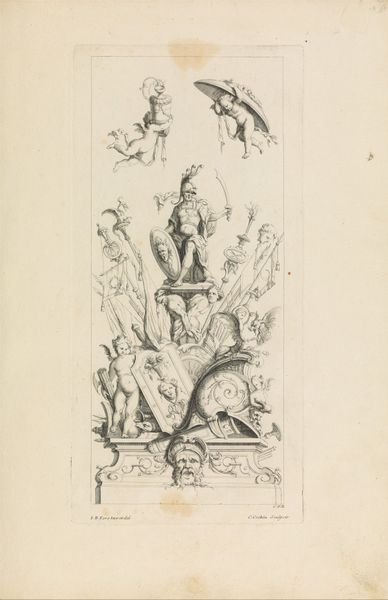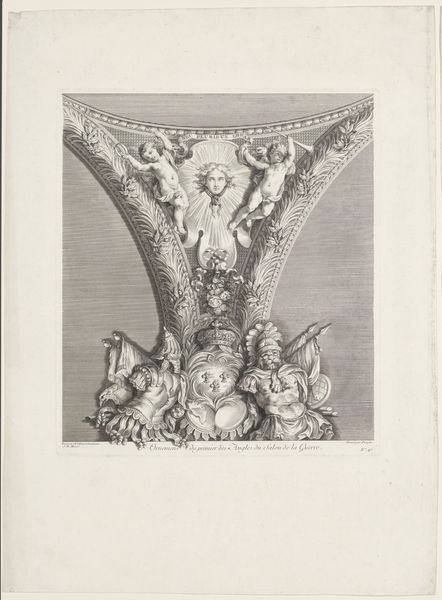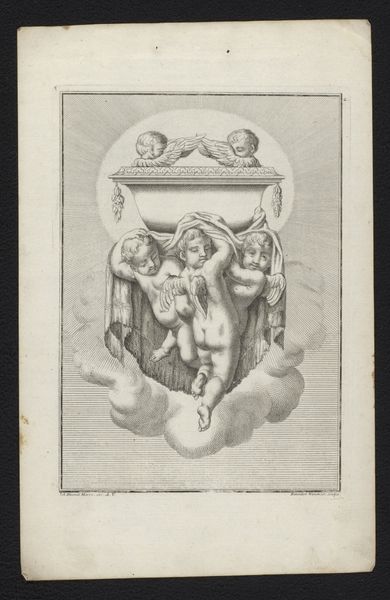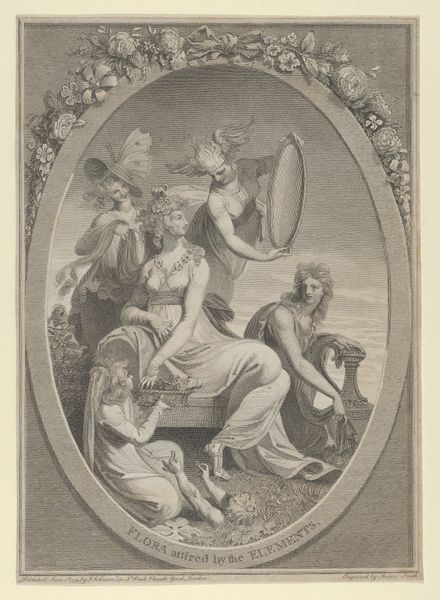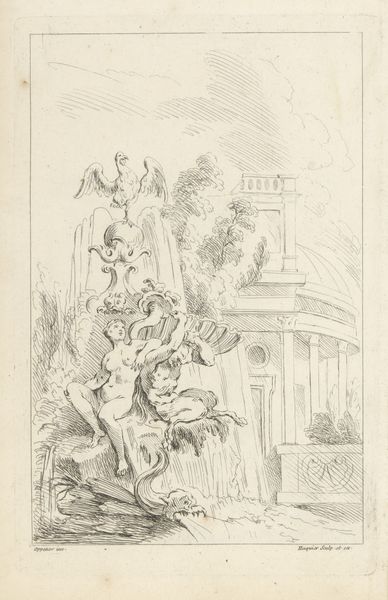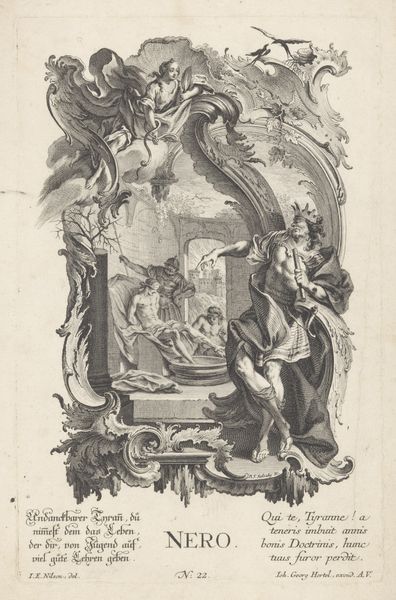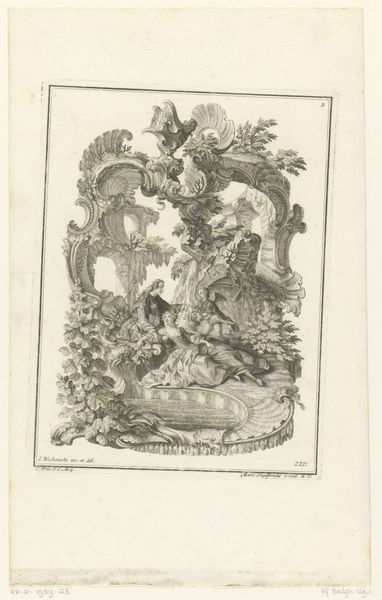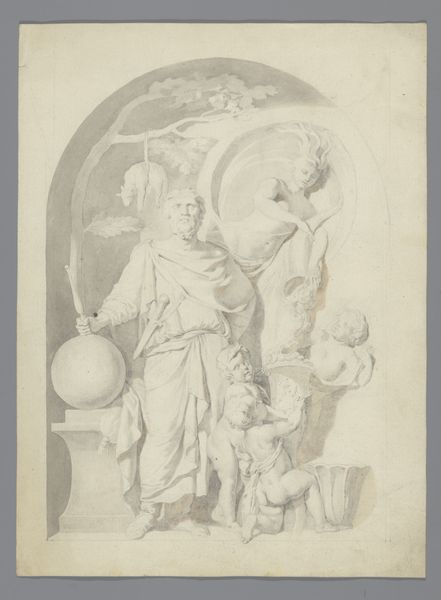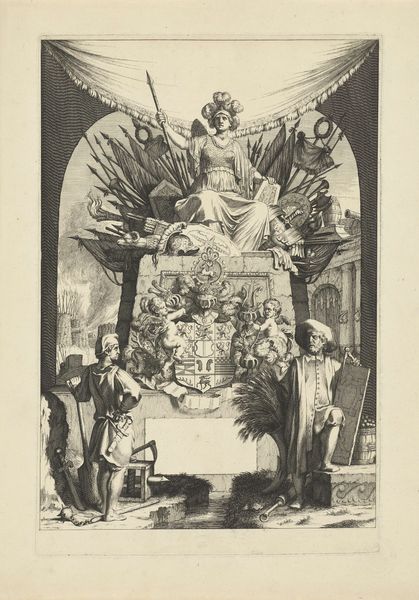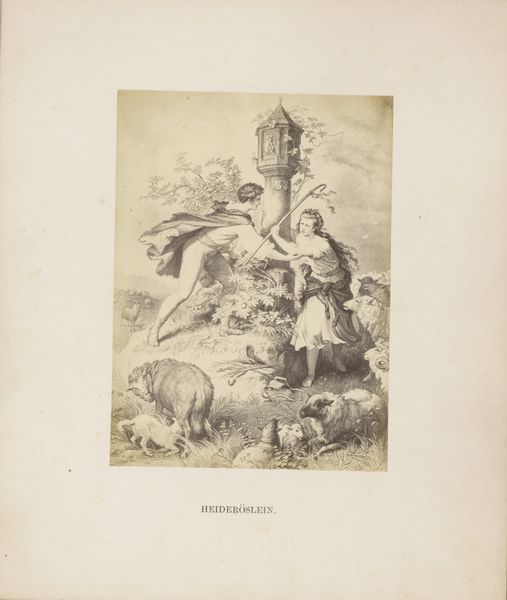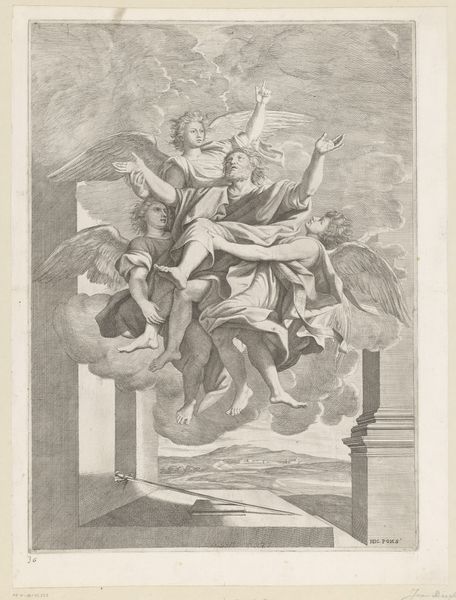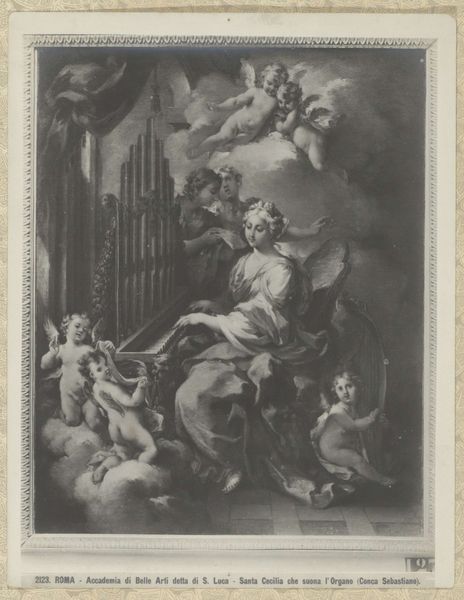
drawing, paper, ink
#
portrait
#
drawing
#
neoclacissism
#
allegory
#
landscape
#
figuration
#
paper
#
ink
#
history-painting
Dimensions: height 394 mm, width 270 mm
Copyright: Rijks Museum: Open Domain
Curator: Immediately, this drawing strikes me as meticulously structured, even theatrical in its composition. Editor: Absolutely, there is an almost stage-like quality. You can feel the artist attempting to assemble varied elements from disparate iconographic traditions together into one piece. Curator: Indeed. This is "Nederlands Verlossing, 1813," created in 1814 by an anonymous artist, now held here at the Rijksmuseum. It’s rendered in ink on paper, and you can clearly discern the layered approach with the wash and line work. Editor: I am interested by the materiality of ink in this era. One can easily imagine how a work like this reflects the historical context from which it emerges. Paper shortages or ink supplies would inevitably shape this work, down to the mark-making itself. Curator: Note how the artist employs neoclassical forms, evidenced by the idealized figures and balanced arrangement of the components. Consider, for example, how the verticality is established by the pillar capped with a bust of what I take to be a member of the house of Orange. Editor: While classical allegory can give us symbolic pointers about sovereignty and the Dutch identity, one must also consider the lion down at the lower left: to me it's a strong emblem of nationhood, as are the broken chains by the seated figure's feet. I imagine these objects of production involved entire studios and artisans during the era. What narratives do we overlook when we prioritize the figure or bust over the instruments that communicate "nation?" Curator: That's astute. The angel floating overhead trumpets some manner of proclamation. It points to larger sociopolitical forces in play at the time this work was made. And indeed, one could scrutinize every figure in relation to its placement, scale, and rendering style. Editor: Exactly, let’s be mindful of all the many invisible hands involved in works that on the surface can feel purely cerebral and ideal. To focus only on the author diminishes the conversation around its origins and production. Curator: I agree that approaching this through production history sheds a unique light. I think close attention to stylistic and iconographic lineage is still of fundamental importance. Editor: Seeing these artworks as objects with long lives that intertwine with histories of manufacturing can open more possibilities. I think looking closer at paper or ink or how these images move beyond the elite circles starts the right conversations.
Comments
No comments
Be the first to comment and join the conversation on the ultimate creative platform.
